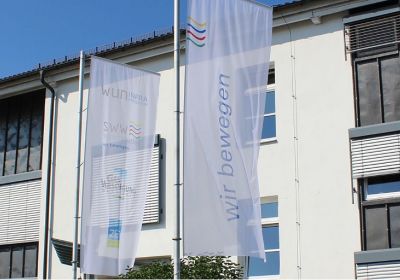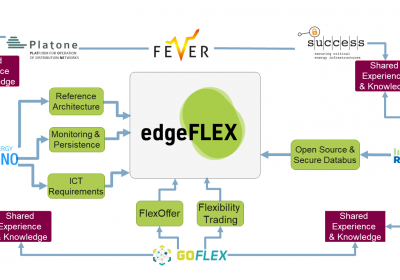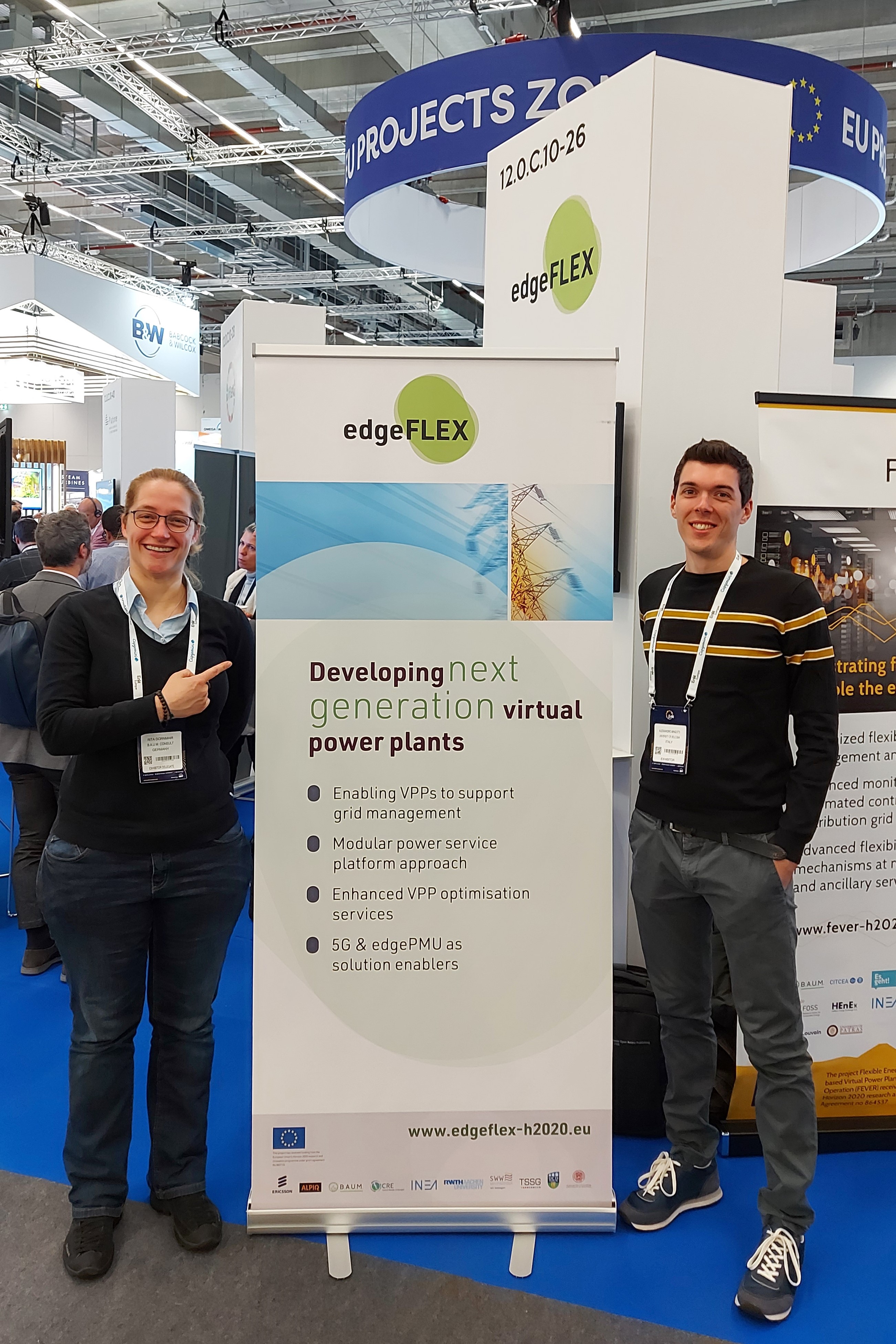Developing next generation virtual power plant
Our European research and innovation project edgeFLEX aims at further developing the concept of Virtual Power Plants (VPPs) to manage a wider range of generation and storage assets in a new way. By offering a set of fast and dynamic service-to-grid operations, the emergence of a new market for ancillary services will be enabled. The ten project partners propose a new architecture of VPPs with communications, supported by 5G, corresponding to multiple layers of dynamics, paving the way for a fully renewable energy system. With the expansion of the VPP concept to the idea of local energy communities, technical solutions are linked to societal expectations.
What's going on
BRIDGE “Stakeholder Characterisation” Survey
The topic group 'Stakeholder Characterisation with B.A.U.M as leader initiated a large-scale survey with the goal to create an open accessible European database to share the insights of the gathered engagement experiences.
>>>
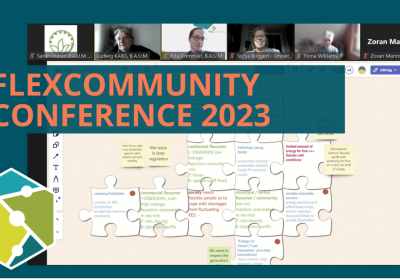
New in March
Inside edgeFLEX
BAUM
>>>
Gender Equality Process
Example of SWW Wunsiedel GmbH
A plan to give all genders the same opportunities and support in the company
>>>

FlexCommunity Conference 2023
The FlexCommunity Conference was packed with many interesting and fruitful discussions.
>>>

Scientific Publications
Have a look at the wide selection of scientific publications edgeFLEX has provided!
>>>

FLEX Community Conference 2023
22-23 February: Discuss with us how we can make flexibilities in the energy system thrive!
>>>
edgeFLEX at EUSEW 22
edgeFLEX took part in the European Sustainable Energy Week (EUSEW) 2022 as part of the FlexCommunity’s virtual booth at the Energy Fair from 26 to 28 September which led to interesting 1:1 online meetings and new members for our FlexCommunity.
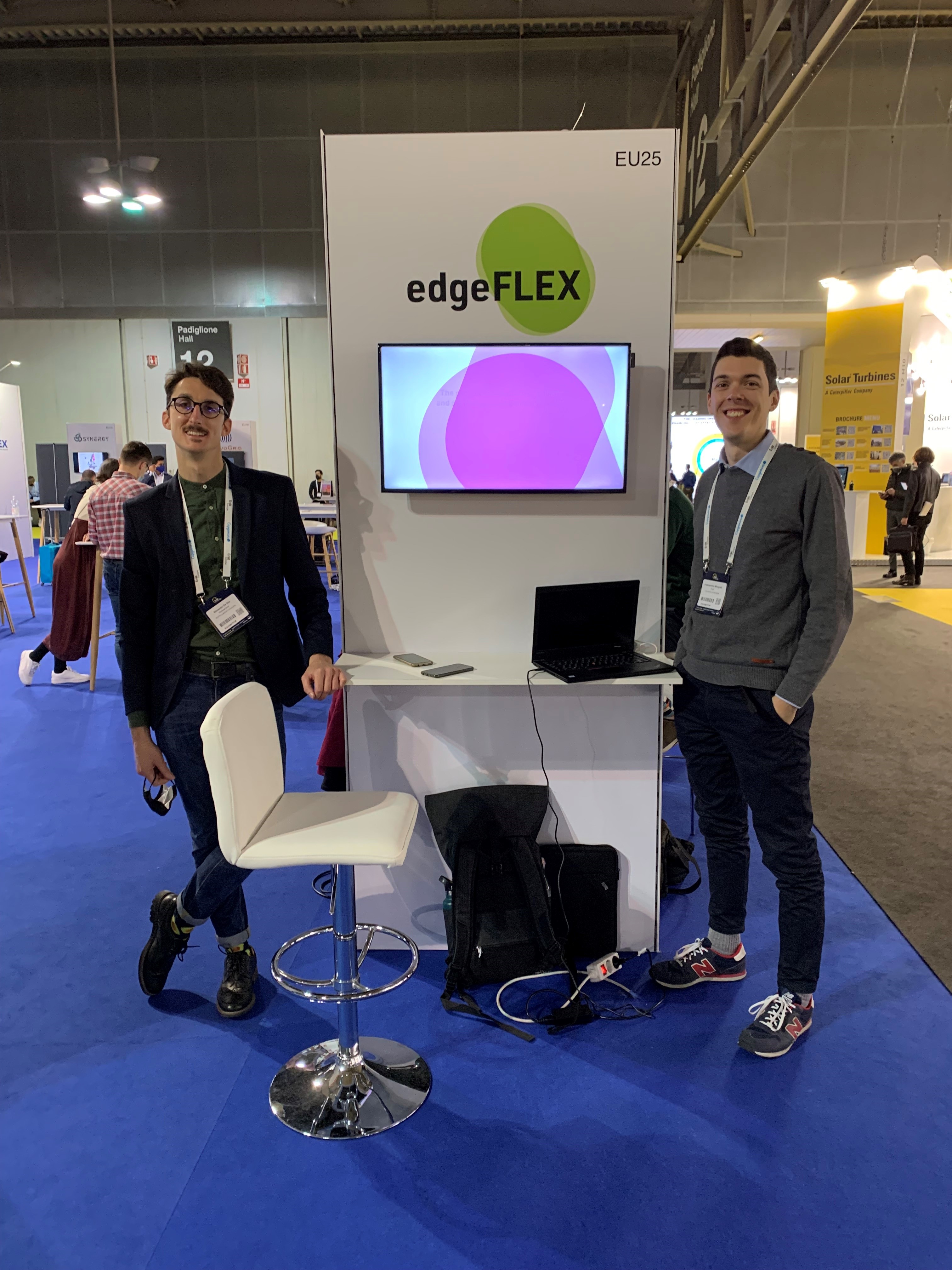
edgeFLEX at ENLIT 2021 in Milano

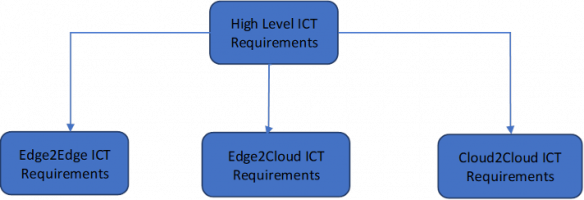
Inside edgeFLEX
Today: CRE
Supporting regulatory measures for smart grids and promoting flexibility
The energy sector is increasingly associated with the terminology "energy transition," and the main factors that determine and enhance this transition are the integration of renewable energy sources and digitalization. The smart grid concept par excellence is based on a series of real-time features and functionalities, by involving 5G technology, integration of algorithms for analysis and substantiation of decisions using big data, innovative services, and solutions to promote flexibility in the energy systems, responding to the challenges of managing the unpredictability of renewables.
The effective exploitation of this valuable source depends, to a large extent, on the quality of the data analysis, interpretation algorithms, and the associated ICT applications and cloud-based services for grid operation effectiveness and flexibility.
The development of such solutions and the wider analysis of their implementation framework, within the context of the edgeFLEX project, highlighted several aspects that need to be considered for facilitating the widespread adoption.
The edgeFLEX VPP2.0 solution, involving VPPs together with the energy communities in real time grid management and supporting flexibility, is part of the broader context of the digitalization of energy systems, consolidating the energy sector towards exploiting the huge potential of ICT real-time solutions, having an impact on better monitoring, control, and optimization of operations.
Whether we are referring to technical or market challenges, in the context of adopting and implementing smart grid solutions and promoting flexibility, the regulations in force can be both important obstacles and catalysts for the adoption of these solutions.
By default, and with technology advancement, the market reacts and proposes solutions to respond to these trends, but their adoption and implementation depends, to a large extent, on new measures and updates of the regulatory framework, such as:
- The ICT Network Code Continuum addressing missing ICT network code provisions
- A new ancillary service to address the growing need to provide inertia in the grid
- A new approach to local Voltage regulation based on integrating ICT solutions
- A Network Code (NC) for Demand-Side Flexibility (DSF) taking in small assets
- Network Code on Cybersecurity
Mihai Mladin
The edgeFLEX Trial in Milano, Italy
The edgeFLEX Trial in Wunsiedel, Germany
Upcoming Events

edgeFLEX contributes to 3GPP standard
The use case for the edgePMU, the innovative implementation concept developed in edgeFLEX project, was included in the 3GPP standard. The new concept will be implemented and tested in DSO power grid network and in the laboratory with the use of a live 5G network. 3GPP technical report 22.867, which describes the edgePMU and the related edge monitoring functionality use case, is available on the following link: https://www.3gpp.org/DynaReport/22867.htm"
3GPP is a global initiative developing specifications for wireless communications. It brings together seven of the world’s leading wireless standards organizations.
Towards a new era of energy flexibility
With the increased share of renewable energy in the energy mix, causing the energy market to change, now is the time to revise the VPP concept. VPPs need to support not only the promotion of intermittent renewables (RES) but also the integration of all Distributed Energy Resources (DER) into the full scope of grid operations. Such a leap raises challenges: optimal combination of DER and RES in a new generation of VPPs is needed to jointly provide grid supportive flexibility with slow reaction time known from day-head and intra-day markets, as well as real-time reaction to provide fast frequency and inertial response and dynamic-phasor driven voltage control ancillary services. In a nutshell, in a DER-based power electronics-driven network VPPs need to play all the roles that synchronous machines play in a traditional system.
Flexibility can be provided by going beyond electrochemical storage and exploring opportunities offered by Power2X or inverters. Demand Side Management or low-cost solutions such as Power-to-Heat could be deployed in a neighbourhood expanding the concept of VPPs to the concept of a Local Energy Communities (LECs). edgeFLEX links technical solutions to societal expectations. Short reaction times can be addressed by 5G-powered edge clouds linking dispersed devices in near real-time. In this respect, a new concept of VPPs, with communications corresponding to multiple layers of dynamics, becomes possible. edgeFLEX proposes a new architecture for VPPs deploying such a multi-layer solution, paving the way for a fully renewable energy system. VPPs are brought to a new level, enabling them to interact on markets offering various ancillary services to system operators. edgeFLEX develops this next generation VPP concept and demonstrates it in the context of three field trials and accompanying laboratory tests. The project explores innovative optimisations, financial tools and business scenarios for VPPs and assesses the economic and societal impact. The consortium actively works on removing barriers by contributing to standards and European level regulation.
Field Trials

